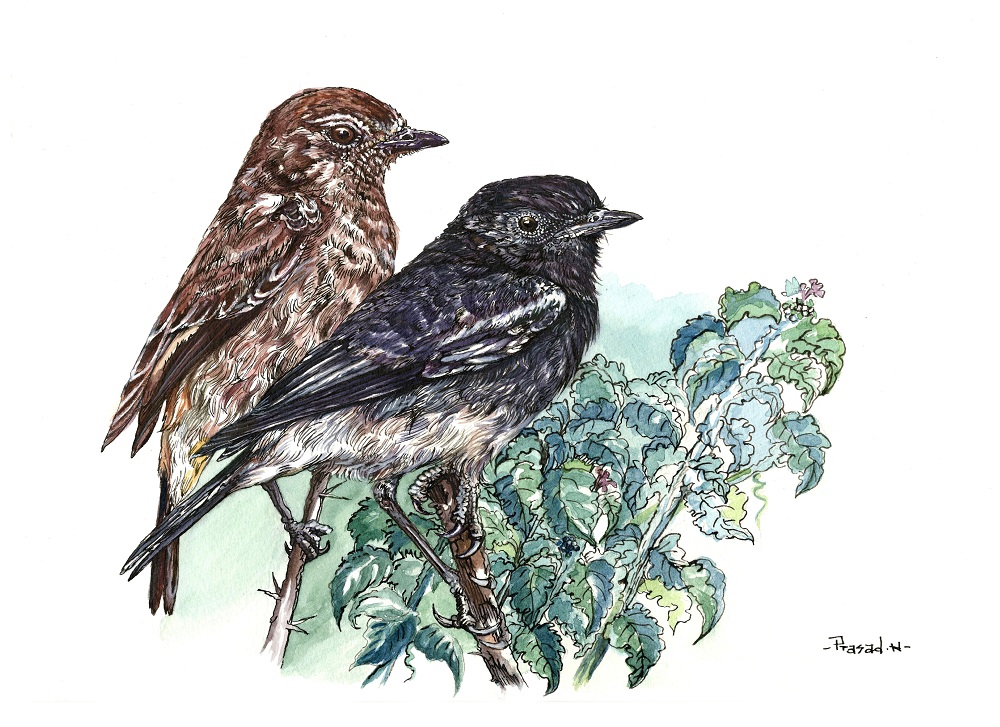

- Title: Insect Slayer!
- Medium: Dip Pen inking, Indian Ink and watercolor on paper
- Duration: 21 hours
- February-27-2016
- Reference: Own Image
Welcome back one and all to yet another edition of birds of Bangalore, I kept close track of the Ashy Prinia family beside my window. With great effort they have built their nest and after summer their breeding season starts. Last year, palm squirrels took the eggs away and this year the entire plot has been cleaned and set to fire due to a construction happening. They will dump all the construction materials in this plot. Hence the Ashy Prinia family will have again start hunting for a safe place to build their nest. I am seeing it’s getting tougher day by day for these little warriors to survive in the urban areas. How long they will survive here, only time will tell! Haven't heard their calls for about a week now and a vital part of my life is gone!
Headed out for a walk to Rampura lake, to check out the latest developments, this lake is almost filled up with debris, few Purple Swamphen are still sticking around, may be they have some hope that someone is going to save this lake but I don't see it is happening though! Lots of Black Kites hunting rodents and any fish that pops up. Huge number of Dragonflies fluttering around and saw couple of Green Bee-eaters on the high tension electric wires, Southern Coucal flying around the guava farm,Rose-ringed Parakeets feeding on the ripe guava's. Also saw our guest of this week around the tomato growth.
Male is usually black in color, crown is black, eyes are dark brown, bill is black, breast is black, white under parts, white rump, and white marking on the middle and lower wing coverts, legs are black and so are the tail. Female is rusty brown in color, crown is brown, with cream eye line, eyes are dark brown, bill is black, breast is brown with dotted dark brown steaks, rump is white, legs are black. Young ones resemble the female, legs are skin tone colored, cream-colored spotted steaks are found on the crown as well on the breast, size is surely smaller.
Well, we are discussing about Pied Bushchat (Saxicola caprata), like the Prinia, they are also insectivorous. Their main diet is insects, hence the tomato field makes an ideal hunting grown for these birds. Natural manure is been used to grow these vegetables, hence I found lots of worms in this crop. This bushchat like other chats hunts from a prominent low perch. They nest in cavities in stonewalls or in holes in an embankment, lining the nest with grass and animal hair. Breeding season is mainly from March to June. Eggs are guarded and taken care mainly by the female, male hunts for himself, as well as for the female. Both parents take care of the young ones.
Birds of prey do attack these bushchats, palm squirrels destroy their nests and also feeding on their eggs, sometimes rodents also destroy their nests. These bushchats have been caught by local hunters for meat and also have been sold as caged birds in many parts of our country. Pet trade is one of the worst cause of decline in numbers of many native birds, birds in captivity are kept is highly unhygienic conditions, about sixty percent of wild birds in captivity died of infections. Also chances of carrying bacteria is high incase of captive birds. Having wild birds in captive is a criminal offense as per Wildlife Act. One way of stopping this cruelty is stop buying caged birds, if no one buys them, people will stop selling them or least trapping birds in large numbers will come down. Birds are suppose to be free and not caged, hence teach the younger generation not to cage birds. We can also report it if we see wild birds caged to the nearest forest warden!
So until next time, keep watching!